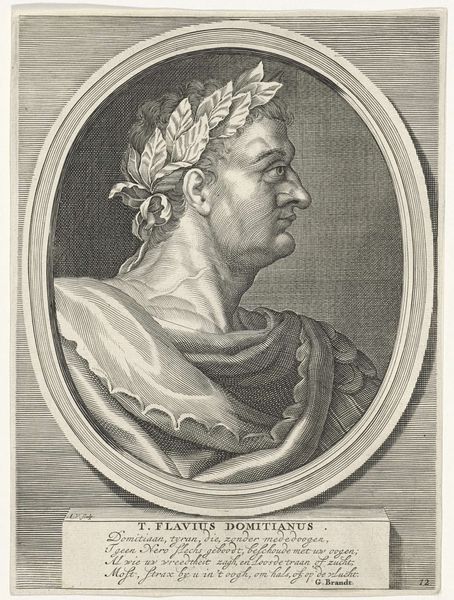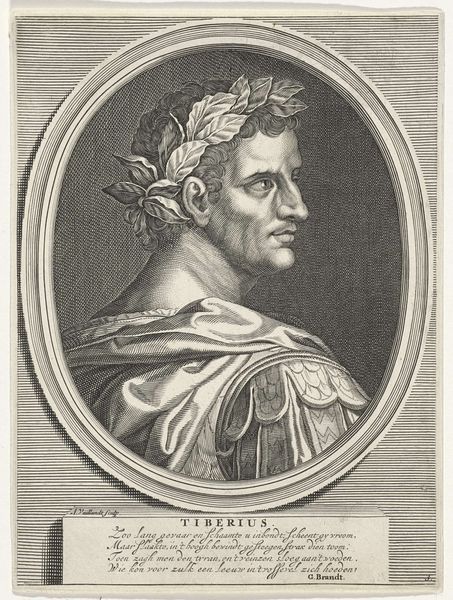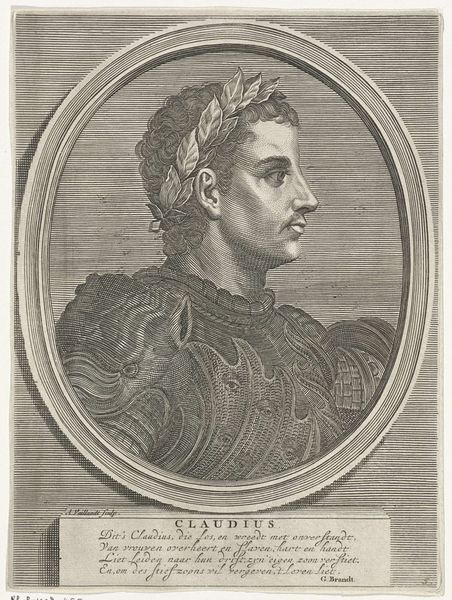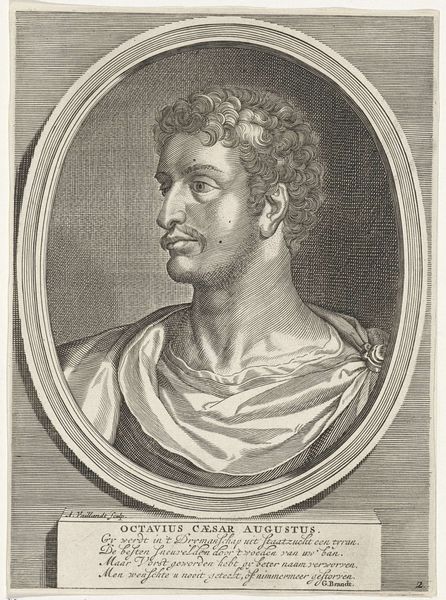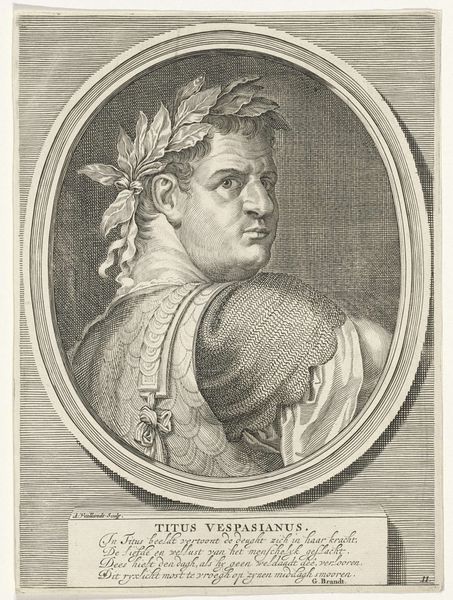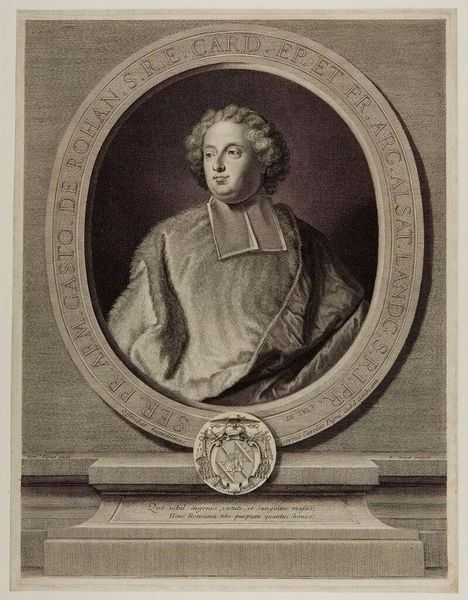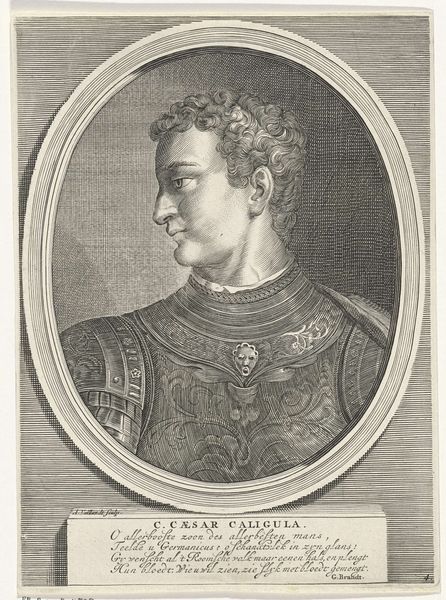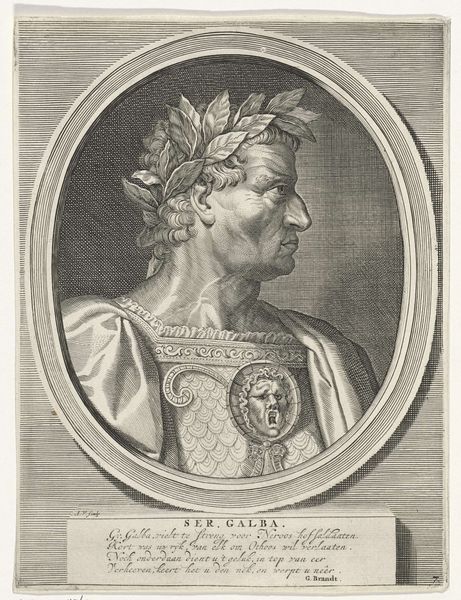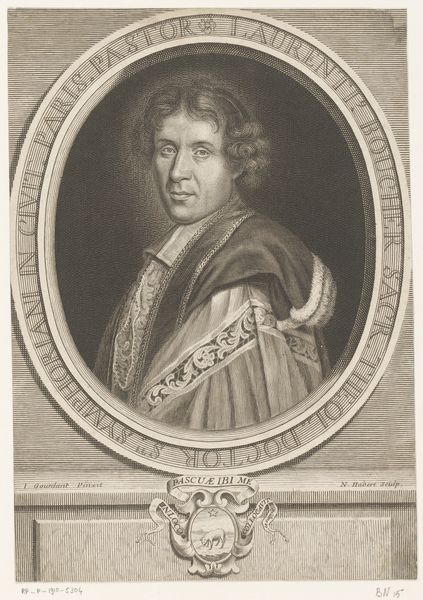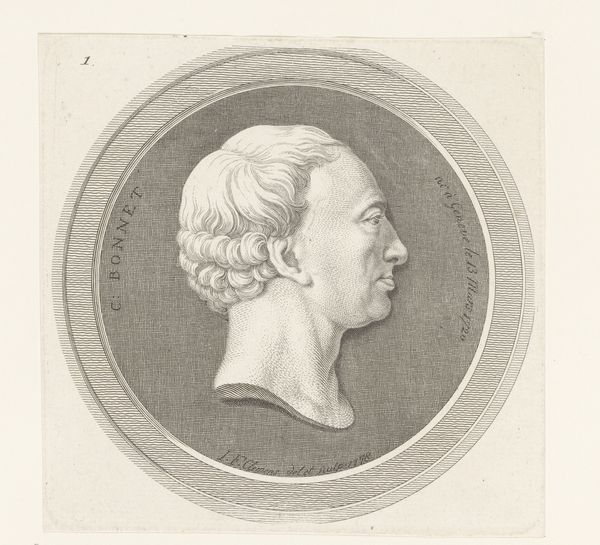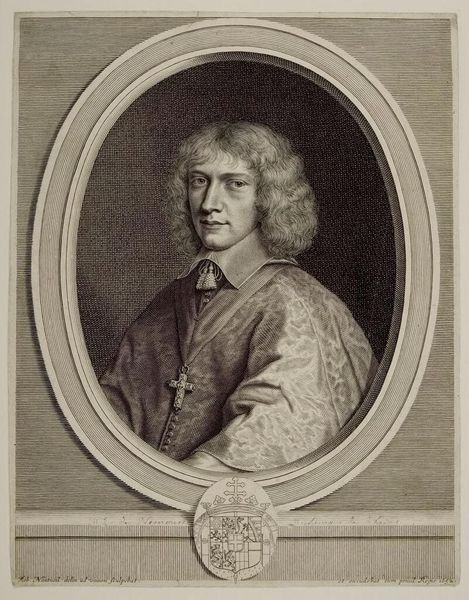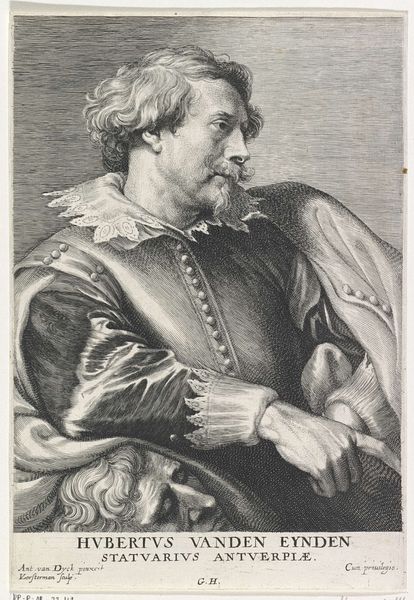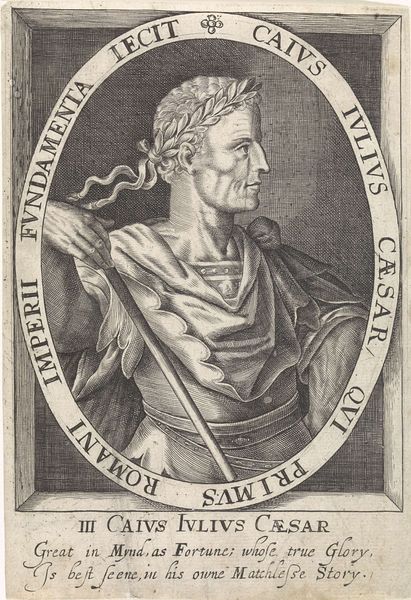
engraving
#
portrait
#
baroque
#
old engraving style
#
caricature
#
geometric
#
history-painting
#
engraving
Dimensions: height 217 mm, width 159 mm
Copyright: Rijks Museum: Open Domain
Editor: So, this is "Portret van Germanicus," an engraving by Andries Vaillant, likely from between 1665 and 1693. There's a definite formality to it, even a sort of coldness given the monochromatic palette, and the stark profile view emphasizes the subject’s rather severe features. What do you see in this piece, particularly beyond its surface representation? Curator: It's interesting that you mention "coldness." Consider the role of portraiture during the Baroque period. Beyond commemorating the sitter, portraits often functioned as assertions of power, carefully constructed to project a specific image, usually aligned to gender, and aristocratic expectations. Here, think about Germanicus. Why depict this Roman general centuries after his death? What does evoking classical antiquity achieve? Editor: So it's less about capturing likeness, and more about...borrowing authority from the past? It makes me think of contemporary debates around monuments; who we choose to commemorate, and why. Curator: Precisely! The image engages in a dialogue with history, but through the lens of Vaillant’s contemporary sociopolitical landscape. Think about the use of classical imagery during a period of evolving national identities and the rise of powerful elites. Consider the message this image transmits regarding leadership, and perhaps even implicitly, the artist's relationship to power. How do these factors potentially shape its reception? Editor: I suppose by framing the sitter, and the new aristocracy as inheritors of that Roman glory, the portrait legitimizes their authority, though maybe now we’d also question what "Roman glory" actually signifies and whether that power structure truly serves us. Curator: Exactly! And this critical awareness is crucial when looking at art. Understanding the context, we begin to disentangle the messages embedded within, and that gives the works a newfound relevance for how we understand current power relations. Editor: This portrait is much more loaded than I initially thought! I see now that beyond simple representation, it’s actively participating in a conversation about power, history, and identity. Thanks!
Comments
No comments
Be the first to comment and join the conversation on the ultimate creative platform.
